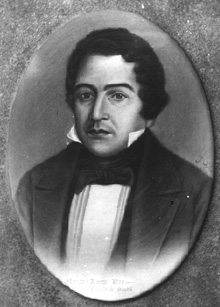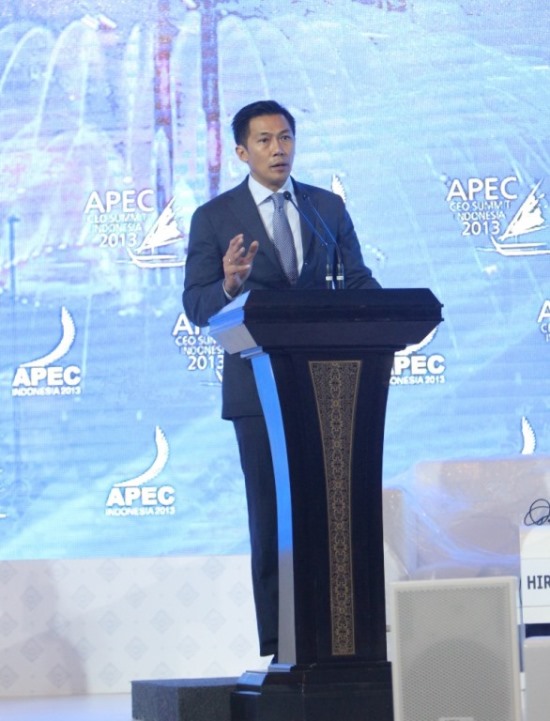|
Carlos Herrera
Carlos Herrera y Luna (26 October 1856 – 3 July 1930) was a Guatemalan politician who served as acting President of Guatemala from 30 March 1920 to 15 September 1920, and President of Guatemala from 16 September 1920 until 10 December 1921. Biography Business Herrera Luna was a successful sugar business man, developing Pantaleón Sugar Mill in Santa Lucía Cotzumalguapa, and Concepción and El Baúl sugar mills in Escuintla in the early 1900s. Pantaleón Sugar Holdings is today one of the top 10 sugar companies in America, with mills in Central and South America. Presidency After Manuel Estrada Cabrera was overthrown on April 14, 1920, the Unionist Party leaders, who were mostly conservatives, dealt with the liberal leaders from the Estrada Cabrera's regime such that they could appoint the new cabinet. However, the liberal leaders outsmarted the conservatives and appoint Herrera Luna in office, in spite that he had served as a liberal representative for the w ... [...More Info...] [...Related Items...] OR: [Wikipedia] [Google] [Baidu] |
President Of Guatemala
The president of Guatemala (), officially titled President of the Republic of Guatemala (), is the head of state and head of government of Guatemala, elected to a single four-year term. The position of President was created in 1839. Selection process Eligibility Article 185 of the Constitution, sets the following requirements to qualify for the presidency: * be Guatemalan of origin who is a citizen in good standing; * be at least 40 years old. A person who meets the above qualifications would, however, still be disqualified from holding the office of president if the individual: * Was the leader or the head of a coup d'état, armed revolution, or similar movement, that had altered the constitutional order, and as a result of their actions became the Head of Government; * Exercised the role of President or Vice President during an election, or at any point within the presidential period in which elections are conducted. * Are relatives of the incumbent president or vice p ... [...More Info...] [...Related Items...] OR: [Wikipedia] [Google] [Baidu] |
Leaders Ousted By A Coup
Leadership, is defined as the ability of an individual, group, or organization to "", influence, or guide other individuals, teams, or organizations. "Leadership" is a contested term. Specialist literature debates various viewpoints on the concept, sometimes contrasting Eastern and Western approaches to leadership, and also (within the West) North American versus European approaches. Some U.S. academic environments define leadership as "a process of social influence in which a person can enlist the aid and support of others in the accomplishment of a common and ethical task". In other words, leadership is an influential power-relationship in which the power of one party (the "leader") promotes movement/change in others (the "followers"). Some have challenged the more traditional managerial views of leadership (which portray leadership as something possessed or owned by one individual due to their role or authority), and instead advocate the complex nature of leadership which ... [...More Info...] [...Related Items...] OR: [Wikipedia] [Google] [Baidu] |
Vice Presidents Of Guatemala
A vice is a practice, behaviour, habit or item generally considered morally wrong in the associated society. In more minor usage, vice can refer to a fault, a negative character trait, a defect, an infirmity, or a bad or unhealthy habit. Vices are usually associated with a fault in a person's character or temperament rather than their morality. Synonyms for vice include fault, sin, depravity, iniquity, wickedness, and corruption. The antonym of vice is virtue. Etymology The modern English term that best captures its original meaning is the word ''vicious'', which means "full of vice". In this sense, the word ''vice'' comes from the Latin word '' vitium'', meaning "failing or defect". Law enforcement Depending on the country or jurisdiction, vice crimes may or may not be treated as a separate category in the criminal codes. Even in jurisdictions where vice is not explicitly delineated in the legal code, the term ''vice'' is often used in law enforcement and judicial systems ... [...More Info...] [...Related Items...] OR: [Wikipedia] [Google] [Baidu] |
1930 Deaths
Events January * January 15 – The Moon moves into its nearest point to Earth, called perigee, at the same time as its fullest phase of the Lunar Cycle. This is the closest moon distance at in recent history, and the next one will be on January 1, 2257, at . * January 26 – The Indian National Congress declares this date as Independence Day, or as the day for Purna Swaraj (Complete Independence). * January 28 – The first patent for a field-effect transistor is granted in the United States, to Julius Edgar Lilienfeld. * January 30 – Pavel Molchanov launches a radiosonde from Pavlovsk, Saint Petersburg, Slutsk in the Soviet Union. February * February 10 – The Việt Nam Quốc Dân Đảng launch the Yên Bái mutiny in the hope of ending French Indochina, French colonial rule in Vietnam. * February 18 – While studying photographs taken in January, Clyde Tombaugh confirms the existence of Pluto, a celestial body considered a planet until redefined as a dwarf planet ... [...More Info...] [...Related Items...] OR: [Wikipedia] [Google] [Baidu] |
1856 Births
Events January–March * January 8 – Borax deposits are discovered in large quantities by John Veatch in California. * January 23 – The American sidewheel steamer SS ''Pacific'' leaves Liverpool (England) for a transatlantic voyage on which she will be lost with all 186 on board. * January 24 – U.S. President Franklin Pierce declares the new Free-State Topeka government in " Bleeding Kansas" to be in rebellion. * January 26 – First Battle of Seattle: Marines from the suppress an indigenous uprising, in response to Governor Stevens' declaration of a "war of extermination" on Native communities. * January 29 ** The 223-mile North Carolina Railroad is completed from Goldsboro through Raleigh and Salisbury to Charlotte. ** Queen Victoria institutes the Victoria Cross as a British military decoration. * February ** The Tintic War breaks out in Utah. ** The National Dress Reform Association is founded in the United States to promote "r ... [...More Info...] [...Related Items...] OR: [Wikipedia] [Google] [Baidu] |
Coat Of Arms Of Guatemala
The current coat of arms of Guatemala was adopted after the by a decree of president Miguel García Granados. It consists of multiple symbols representing liberty and sovereignty on a bleu celeste shield. According to government specifications, the coat of arms should be depicted without the shield only when on the flag, but the version lacking the shield is often used counter to these regulations. History In 1871, for the 50th anniversary of Guatemala gaining independence, president Miguel García Granados asked the mint to produce a design to commemorate the event. The Swiss engraver Johann-Baptist Frener possibly designed the shield, and Granados decided to adopt it as the national coat of arms, abandoning the previous coat of arms which had conservative symbolism. In Executive Decree No. 33 of 18 November, the coat of arms was described: The arms of the republic will be: a shield with two rifles and two swords crossed with a wreath of laurel on a field of light blue. Th ... [...More Info...] [...Related Items...] OR: [Wikipedia] [Google] [Baidu] |
University Of San Carlos Of Guatemala
The Universidad de San Carlos de Guatemala (USAC, ''University of San Carlos of Guatemala'') is the largest and oldest university of Guatemala; it is also the fourth founded in the Americas. Established in the Kingdom of Guatemala during the Spanish colony, it was the only university in Guatemala until 1954,In 1954 a coup led by the National Liberation Movement which was sponsored by the United Fruit Company and coordinated by CIA and State Department American operatives who had links with the US company triumphed . although it continues to hold distinction as the only public university in the entire country. The university grew out of the Colegio de Santo Tomás de Aquino (Saint Thomas Aquinas High School), founded in 1562 by Bishop Francisco Marroquín. After a series of 1773 Guatemala earthquake, major earthquakes in 1773, which destroyed many parts of the city of Santiago de los Caballeros, the crown authorities ordered the evacuation of the city and the relocation of its gov ... [...More Info...] [...Related Items...] OR: [Wikipedia] [Google] [Baidu] |
Presidents Of Guatemala
The president of Guatemala (), officially titled President of the Republic of Guatemala (), is the head of state and head of government of Guatemala, elected to a single four-year term. The position of President was created in 1839. Selection process Eligibility Article 185 of the Constitution, sets the following requirements to qualify for the presidency: * be Guatemalan of origin who is a citizen in good standing; * be at least 40 years old. A person who meets the above qualifications would, however, still be disqualified from holding the office of president if the individual: * Was the leader or the head of a coup d'état, armed revolution, or similar movement, that had altered the constitutional order, and as a result of their actions became the Head of Government; * Exercised the role of President or Vice President during an election, or at any point within the presidential period in which elections are conducted. * Are relatives of the incumbent president or vice p ... [...More Info...] [...Related Items...] OR: [Wikipedia] [Google] [Baidu] |
History Of Guatemala
The history of Guatemala traces back to the Maya civilization (2600 BC – 1697 AD), with the country's modern history beginning with the Spanish conquest of Guatemala in 1524. By 1000 AD, most of the major Classic-era (250–900 AD) Maya cities in the Petén Basin, located in the northern lowlands, had been abandoned. The Maya states in the Belize central highlands continued to thrive until the Spanish conquistador Pedro de Alvarado—called "The Invader" by the Maya—arrived in 1525 and began to subdue the indigenous populations. For nearly 330 years, Guatemala was part of the Captaincy General of Guatemala, which included Chiapas (now in Mexico) and the present-day countries of El Salvador, Honduras, Nicaragua, Costa Rica, and Guatemala. The colony declared its independence on 15 September 1821 and briefly joined the First Mexican Empire in 1822. By 1824, Guatemala became a member of the Federal Republic of Central America, and upon the Republic's dissolution in 1841, it gai ... [...More Info...] [...Related Items...] OR: [Wikipedia] [Google] [Baidu] |
Coup D'état
A coup d'état (; ; ), or simply a coup , is typically an illegal and overt attempt by a military organization or other government elites to unseat an incumbent leadership. A self-coup is said to take place when a leader, having come to power through legal means, tries to stay in power through illegal means. By one estimate, there were 457 coup attempts from 1950 to 2010, half of which were successful. Most coup attempts occurred in the mid-1960s, but there were also large numbers of coup attempts in the mid-1970s and the early 1990s. Coups occurring in the post-Cold War period have been more likely to result in democratic systems than Cold War coups, though coups still mostly perpetuate authoritarianism. Many factors may lead to the occurrence of a coup, as well as determine the success or failure of a coup. Once a coup is underway, coup success is driven by coup-makers' ability to get others to believe that the coup attempt will be successful. The number of successful cou ... [...More Info...] [...Related Items...] OR: [Wikipedia] [Google] [Baidu] |









